The following information and resources were developed to support groups wishing to build a partnership and catchment management plan to control floating pennywort.
Please contact the Floating pennywort Strategy steering group to let us know of your project, and with any questions you have.
Please contact the Floating pennywort Strategy steering group to let us know of your project, and with any questions you have.
Project planning
It is important to have a clear plan to maximise the effectiveness of any action. The following prompts should help you to build this.
1. Identify government, non-government and volunteer groups who may be interested in a partnership
What floating pennywort control is being undertaken already, and by whom?
- Is the current control working, and if not, why?
- What skills and resources can each partner bring to the project?
- Where are the gaps, and who could fill them?
2. Establish the extent of the project area
Which waterbodies do you wish to include within your plan?
- How does that fit with other existing plans, such as the Catchment Based Approach?
- Have you engaged with relevant landowners, agencies and authorities and sought their permission and cooperation?
- Are potential source populations contained within the project area?
3. Establish the area and severity of the infestation
What is the floating pennywort distribution?
- How does abundance vary along the watercourse?
- What can you do to encourage better recording?
- How will you manage data and recorders?
4. Prioritise where management is most important
What assets, protected areas or amenity interests need protection?
- Where are the source populations?
- Can you contain and reduce large infestations?
- Are there new infestations that could be quickly eradicated?
5. Agree on what you are able to deliver
What resources do you have at your disposal?
- What management techniques can the partnership deliver?
- Can other partners bring valuable skills or equipment?
- Do you have the appropriate access and have a plan for how you intend to dispose of the floating pennywort?
6. Ensure that your activities pose no risk to people or the environment
Can you perform the work in a safe and biosecure manner?
- Do you have the appropriate risk assessments and equipment to avoid harm to people and the environment?
- Does everyone have the appropriate training and sufficient insurance cover?
- How will the work impact other water users and members of the public?
7. Ensure all partners are clear on what you intend to achieve, and that you have the means to know when you have done so
Have you agreed your management objectives?
- Do your management objectives vary in different locations, have these been mapped and communicated and will they be monitored?
- Are your objectives realistic, agreed by all the partners and can they be sustained?
- Do you need special permissions and have you obtained them?
8. Coordinate your management
How will you plan and coordinate the work?
- Will one or more partners need to mechanically remove the bulk of the FP before volunteers can become engaged?
- Who are the landowners, asset owners and users of the watercourse, how will the work impact them and have they agreed to the work?
- How will you coordinate and motivate volunteers?
9. Establish and maintain good communications
How will you communicate about your project?
- Are you communicating adequately with the relevant landowners, asset owners, water users and the local community?
- Do you have a media plan, agreed by all the partners?
- Are you engaging with your recorders and encouraging other people to become engaged in the project?
10. Consolidate your success, share it and encourage others to emulate it
How will you sustain the improvements and share what you have achieved?
- How will you ensure that resources are still available to respond quickly to future management needs?
- What can you do to capture all that you have achieved and learned so that others can follow your example?
- Are there other environmental outcomes, such as management of other invasive species, litter-clearance or habitat improvement that the partnership could focus on in future?
Risk assessments and insurance cover
It is essential that each project has clarity on which organisation is the lead partner for health and safety issues. Working in or near water is a high risk activity, especially when it includes manual lifting and hauling. It is essential that risk assessments for the activity in question, and the sites visited, are carried out and communicated with all those engaged in the project, and that those participating in the activity are covered by appropriate insurance. No one should partake in an activity for which they are not trained, equipped and insured for.
Biosecurity
Invasive non-native species are primarily spread by people, and it is essential that strict biosecurity is undertaken to ensure that activities don’t result in further spread. Everyone partaking in the activity must follow strict Check, Clean, Dry procedures for all their clothing and equipment, and should have completed the free online biosecurity training. Weed must be disposed of in a manner that prevents the further spread of floating pennywort, and other associated organisms, to new sites.
- View more information on biosecurity
- Download a biosecurity risk assessment
Useful links
- Case studies from other groups: Yorkshire, Peak Forest Canal, RDAA / Lower Kennet, River Stort (PDF).
- Floating pennywort ID sheet (PDF)
- Record floating pennywort (external link) and other non-native species
- information on biosecurity
- Biosecurity risk assessment
- Information on Local Action Groups
- Free online biosecurity training (external link)
- Management techniques
- Check Clean Dry
- Local Action Group toolkit
Return to the main floating pennywort strategy page.
